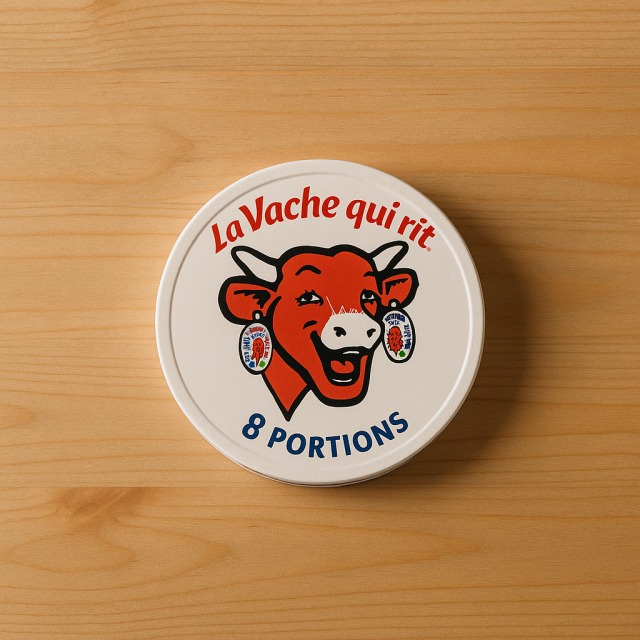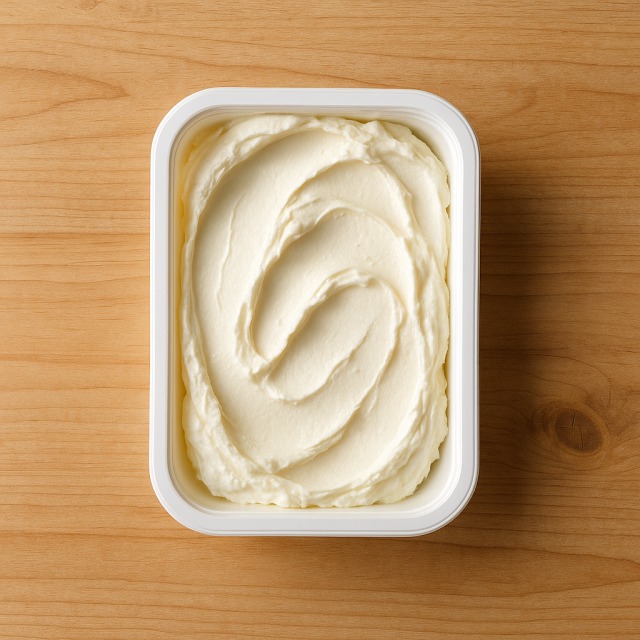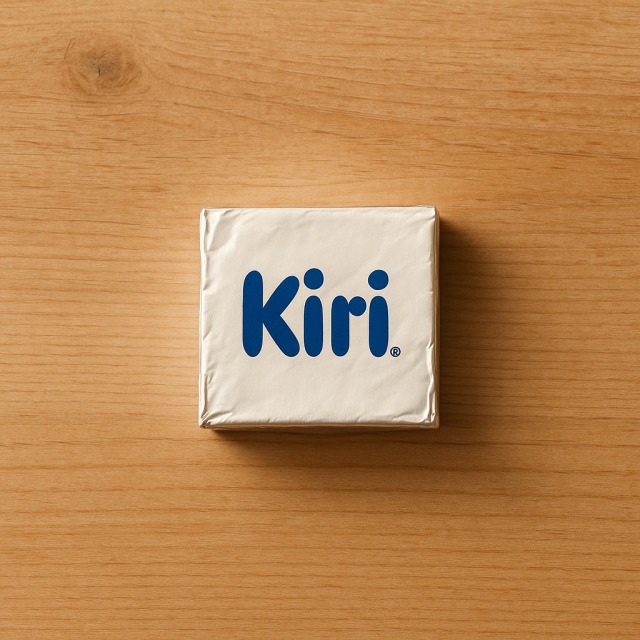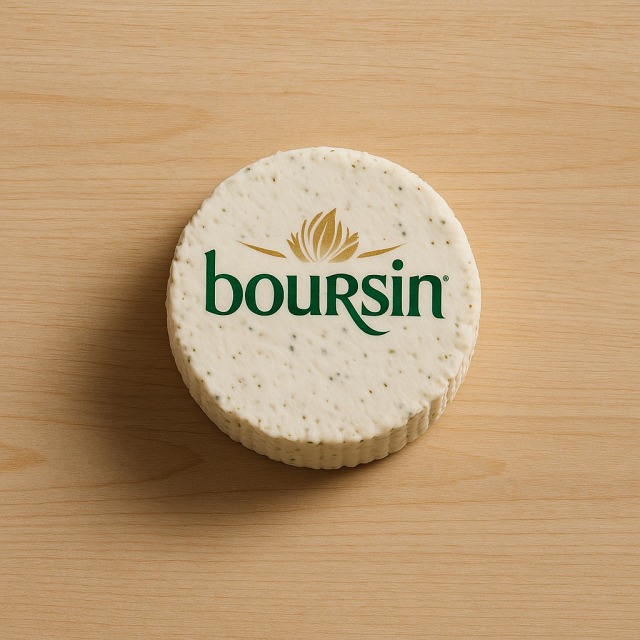Calorie Chart / Cheeses / The Laughing Cow
How Many Calories Are in The Laughing Cow?
Calculation of the nutritional value & Recommended Dietary Intake of The Laughing Cow
For g and a calorie requirement of kcal
| Calories 41 kcal | Proteins 1.9 g | Lipids 3.2 g | Carbohydrates 1 g |
| 2% | 3% | 5% | 0% |
Health benefits of The Laughing Cow

The Laughing Cow - 100g
Calories 239 kcal
Proteins 11 g
Lipids 19 g
Carbohydrates 6 g
The Laughing Cow is a portion-controlled processed cheese that delivers moderate calories compared with many other cheeses: 239 kcal per 100 g. Those calories come mainly from 19 g of lipids and 11 g of proteins, making it an energy source that can fit into a balanced diet when the calories are counted carefully. Because each triangle is individually wrapped, it becomes easier to keep track of calories, an advantage for anyone monitoring daily calories for weight management.
Nutritionally, it provides valuable calcium (around 500 mg/100 g) that contributes to bone health, as well as phosphorus and vitamin B12, both essential for energy metabolism. Vitamin A supports vision and immune defenses. With its soft texture, it is also convenient for children or seniors who may have difficulty chewing harder cheeses. Although its sodium content is noticeable, the controlled portions help limit overall intake and therefore limit extra calories from over-spreading.
Created in 1921 in France, The Laughing Cow was one of the first cheeses marketed in individual foil portions. This innovative packaging not only preserves flavor but also acts as a built-in reminder of calories per portion. Historically, soldiers in World War I enjoyed a similar cheese spread; the brand's smiling cow symbol later became a popular cultural icon recognized worldwide. In short, while calorie-dense compared with vegetables, it remains moderate-calorie in the cheese family and can be a practical ally when total daily calories are monitored.
Tips for incorporating The Laughing Cow into a balanced diet
For a quick, lower-calorie snack, spread one triangle of The Laughing Cow on raw vegetable sticks such as cucumber, carrot, or bell pepper. You keep the creamy taste while adding fiber and almost no extra calories, and the fixed portion makes it simple to count calories accurately.
In hot dishes, melt a couple of triangles into a bowl of steamed broccoli or stir them into whole-grain brown rice instead of heavy cream. You will obtain the same velvety texture with fewer calories than a classic béchamel. Athletes who need post-training proteins without exceeding their calorie limits can pair it with a grilled chicken breast and vegetables.
The cheese also shines in family recipes: slide a triangle into a homemade croque-monsieur, mix it into mashed potatoes for extra smoothness, or stuff it inside baked mushrooms. In all cases, counting the triangles makes it effortless to control added calories, helping you stay within your daily calorie budget.
Frequently Asked Questions
- How many calories are in The Laughing Cow?
- There are 239 kcal per 100 g, which equals about 48 kcal per standard 20 g triangle.
- How many calories are in one triangle of The Laughing Cow?
- A single 20 g triangle provides roughly 48 calories, making it easy to integrate into a 100- or 200-calorie snack.
- Is The Laughing Cow suitable for a weight-loss diet?
- Yes, the individually wrapped portions simplify calorie counting; keeping to one or two triangles can satisfy a cheese craving for under 100 calories.
- How does The Laughing Cow compare in calories to Emmental or Brie?
- Both Emmental and Brie exceed 300 kcal per 100 g, whereas The Laughing Cow sits at 239 kcal, so it is the lighter choice in terms of calories.
- Does melting The Laughing Cow change its calories?
- No. Heating does not add or remove calories; the dish will still contain 239 kcal per 100 g of cheese used.
- Are the calories in The Laughing Cow mainly from fat?
- About 70% of its calories come from lipids, 18% from proteins, and the remaining 12% from carbohydrates.
Similar foods
Information provided by Calorie Menu may contain inaccuracies or errors. It cannot, under any circumstances, substitute medical advice or medication.










